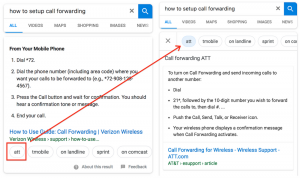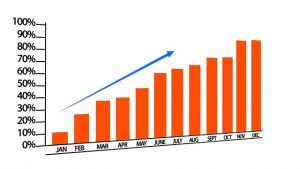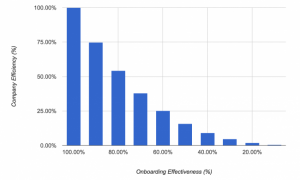So, you’re a wholesale distribution or manufacturing company that has just built a beautiful new direct-to-consumer eCommerce website. You took everything you learned working with your customers and applied all those best practices to this shiny new site. You might be thinking you can just sit back, relax and wait for the orders to start rolling in. There’s just one problem.
Your customers can’t find you.
For wholesale distribution companies that have turned to B2C eCommerce as an additional revenue channel, figuring out how to attract customers to your site is a whole new animal from what you are used to with in-person sales. Your B2B customers have a relationship with you that has already been established offline.
But in B2C, effective search engine optimization (SEO) practices are crucial to attracting new customers. So what are some of the SEO best practices you should be using to grow the B2C side of your eCommerce business?
Getting Found: How Search Engines Work
SEO isn’t just about what you do on your site – it’s about what you do off your site as well. The distinction is referred to as on-site and off-site SEO. On-site SEO refers to the things you do on your website that tell search engines what your website is all about. Off-site SEO is about the things that are happening off of your site that tell search engines how to find you, and that you have authority in the topics you want to target.
To understand why both of these things matter, it helps to understand just a bit more about how search engines work. Think of search engines as “shoppers” looking for a store that carries a particular item – in this case, a search term. Off-site SEO is like the map that helps you get found; on-site SEO is how the search engine determines if you have what it needs. For a more technical discussion of how search engine rankings are determined, MOZ is a great resource.
7 Ecommerce SEO Best Practices
Based on the above explanation, it’s obvious that good search engine practices need to consider both on- and off-site SEO in order to get the best results. So, here are the top seven SEO best practices for your B2C eCommerce site, from both an on-site and off-site perspective.
Let’s look first at some on-site SEO best practices.
1) On-Site: Do Your Research: What you need to know is the most common search terms used by people looking for products like those that you offer. You can do this using tools like the Google Adwords Keyword Planner. You’ll be able to compare search terms and see monthly search volumes for each, as well as how much competition exists for that particular search term. If you need help coming up with search terms to check, try Ubersuggest (a Google search terms scraper) to get a variety of related search terms that you can then run through Adwords to determine which are the most popular. You also need to be looking at your competitors––what terms are they ranking for? What do their metrics look like? The end result of this should be a list of terms to target for the products you carry.
2) On-Site: Solve Your Issues: Search engines are kind of like picky shoppers. There are a variety of factors that can “turn them off” from your site and lower your ranking, like slow site loading speeds and 404 errors. If you’re not sure what your site’s SEO issues are, tools like SEO Site Checkup can help you see what’s going wrong on your site from the search engine’s point of view.
3) On-Site: Focus on Content:
- Categorize: Your content must be categorized. This is crucial for companies that carry a lot of products. You can’t produce compelling content for every page, but you can and should produce it for the categories that are important for your business. There should be searchable text containing your key search terms for each category of products you carry.
- Build Internal Links: When you carry a lot of products, there will be natural links between them. Pages within your site should be logically structured and linked internally in a way that makes sense to your users. The SEO benefit will be that search engines will be better able to understand what your site is about. The benefit to your customers is that they can find more of the kinds of products they are seeking.
- Focus on Quality: High quality content is unique, relevant, and useful. It should include both text and images––both of which should be optimized for search results. A blog that provides valuable information your customers want can also be just as valuable for SEO as your product content.
4) On-Site: Structure Your Site: Once you’ve got good content focused around your search terms, it’s important to make sure that your content is structured properly. Your search terms should match up with the titles, descriptions and metatags in your HTML code. Pages should be properly formatted as well, following an outline structure. Using the H1 and H2 heading tags helps the search engines understand the structure of your content, and they also make your content more readable for customers.
5) On-Site: URL Structure: Just like their human counterparts, search engines like to skim pages of your website to figure out which pages have the content they are looking for before diving in for a closer look. A properly formatted URL can tell them right up front if the page has what they want. Proper format in this case means a URL that contains the search term, presented in a readable way. Search engines aren’t people, and they aren’t able to look at a numerical URL and associate it with a search term.
Now let’s look at two important best practices for off-site SEO.
6) Off-site: Social Networking: For off-site SEO, one of the most important things to do is effectively use social media to promote your products. Whether you choose to use Facebook, Twitter, LinkedIn, Pinterest or a combination, ads or posts that link to your site help search engines verify your site’s authority.
7) Off-Site: Submit to Social Shopping Networks: Instead of waiting for customers to find you, social shopping networks are a way to put your business where the customers already are. Social shopping networks like Pinterest and Polyvore blur the line between social networking and shopping, particularly in industries like fashion or retail.
These are just a few of the dozens of SEO best practices that can help make your eCommerce website rank higher on the terms that are important to your business.
Are you developing a B2C eCommerce site for your business? How do you plan to approach SEO? Tell us in the comments.
Digital & Social Articles on Business 2 Community(55)






